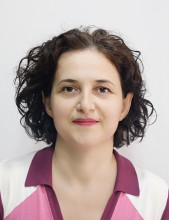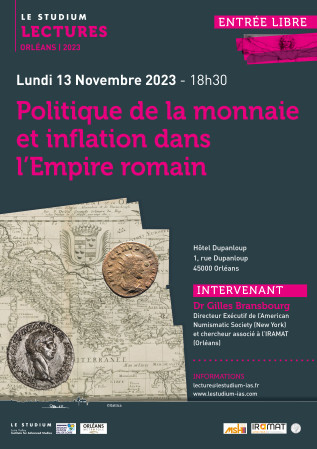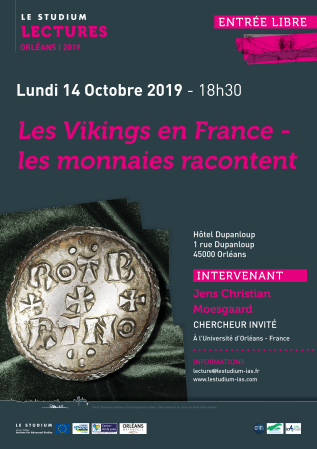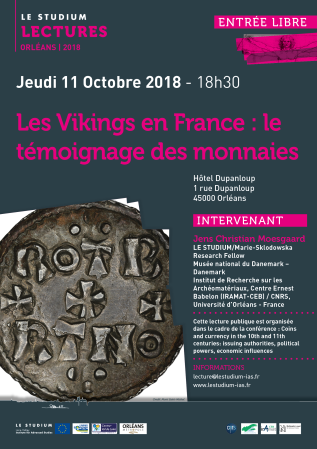The Archaeomaterials Research Institute (IRAMAT)


3D, rue de la Férollerie
CS 60061
Orléans 45071
France
The Institut de recherche sur les archéomatériaux Centre Ernest-Babelon d'Orléans (IRAMAT-CEB) is one of the three components of IRAMAT, along with the Laboratoire Métallurgies et Cultures de Belfort (IRAMAT-LMC) and the Laboratoire Archéomatériaux et Prévision de l'Altération de Saclay (IRAMAT-LAPA). When it was set up in 1980, the Ernest-Babelon Centre's mission was to carry out interdisciplinary research applied to numismatics. Since then, work has been extended to other themes and archaeological materials: synthetic and natural glass, pigments and dyes, construction techniques, goldsmithing, mining archaeology and experiments in ancient metallurgy. Driven by archaeological and historical issues, the research carried out at IRAMAT-CEB is leading to the development of non-destructive characterisation techniques applied to ancient materials and heritage objects. This fully interdisciplinary approach is at the crossroads of archaeology, chemistry, history and physics, and incorporates digital humanities. It offers a broad vision of the evolution of the production, distribution and use of materials in ancient societies over a vast period ranging from prehistory to the modern era.
Research topics:
The IRAMAT Ernest-Babelon Centre's activities are organised around four transversal themes:
Techniques and know-how:
All approaches relatedto the history of techniques and processes for obtaining materials and products, which can only be fosteredby interdisciplinary approaches involvingarchaeology, archaeometry and experimental archaeology, are studied here. These range from an understanding of the production processes involved in the fire arts to the spaces of production and consumption: building sites, glass workshops, money workshops, etc. Archaeometric approaches to thesequestions, in fullsynergy with the data provided by archaeology and the study of texts, make it possible to understand the physico-chemical processes involved in the various stages of the production chains, but also to assess the nature and quality of the materials and objects produced, and to measure the technical, economic and social organisational issues at stake.
Circulation of materials and objects:
This theme covers all the approaches that make it possible to identify the links between the places where raw materials are extracted and produced, the places where objects and semi-finished products are processed and the places where they are used. The resulting networks of exchanges form a complex system in which technical, societal and environmental parameters interact. For example, the circulation of lithic materials during prehistory, the circulation of glass from Protohistory to the modern era (raw materials, ornaments, crockery and architectural glass), the circulation of metals used for monetary production (gold, silver, copper and alloys from Protohistory to the modern era) and for goldsmithing, the circulation networks oflead in the Middle Ages and the circulation of pigments and inks in the medieval and modern periods.
Economic and monetary practices:
While all aspects of numismatics are practised in the laboratory, such as the constitution of corpuses, corner studies, typological analysis, image processing and archaeological contextualisation, IRAMAT’s originality lies in placing the archaeometric approach at the heart of its methodology. The research carried out on coins and 'monetary objects' coversall areas and periods, with a particular focus on coins issued from Protohistory to Modern times,in an area stretching from Western Europe to the Middle East. The economics of coined metals, monetary production policies, depositing and hoarding practices, the place of coins in ancient societies and economies, and quantitative studies combining analytical data and archaeo-numismatic surveys are just some of the studiesundertaken.
Taphonomy of materials: from past to future
This research theme focuses in particular on the alteration of archaeological systems, the understanding of which allowsthe validation of archaeometric information for historical purposes and the provision of useful data for the conservation and restoration of objects. The corrosion of coins and metals in terrestrial and marine environments, the alteration of inks in manuscripts and the alteration of materials in ancient architecture are just some of the issues addressed.Experimental resources:
- Gamma spectrometry chains
- Scanning electron environmental microscope (ESEM XL40) with energy-dispersive and wavelength-dispersive X-ray spectrometers shared with CEMHTI
- Transportable X-ray fluorescence (XRF) spectrometer
- High-resolution inductively coupled plasma mass spectrometer with laser ablation sampling (LAHR-ICPMS Element XR)
- Transportable visible-very near infrared spectrometer coupled to a stereomicroscope for fibre-optic diffuse reflection analysis (FORS)
- Portable FTIR spectrometer.









